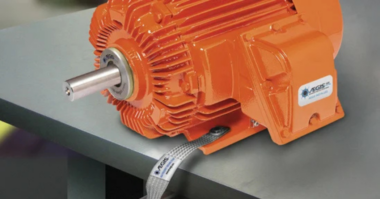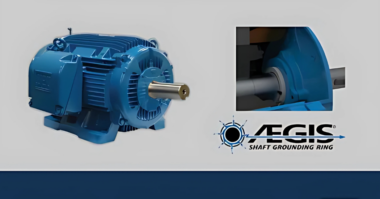Protecting Motor Bearings and Preventing Costly Downtime
Industrial plants rely heavily on the seamless operation of electric motors to drive various processes. However, one significant and common issue that plagues these plants is motor bearing damage, often resulting in expensive downtime and maintenance costs. One culprit behind this damage is stray electrical current, which wreaks havoc on the bearings, causing progressive damage and ultimately leading to the need for replacement.
Identifying the Source of Damage
One common source of stray current threatening motor bearings in industrial plants is the shaft voltage created by variable frequency drives (VFDs). This voltage seeks a way to discharge to ground. Very often, the path of least resistance is through the bearings. But shaft voltage discharge through the bearings, if left unchecked, can lead to premature failure.
The Progression of Bearing Wear
Bearing wear typically progresses through four stages, starting with subtle pitting and progressing to audible noise and visible defects. This gradual deterioration serves as a warning sign, indicating the need for immediate attention to prevent bearing failure and the risk of unplanned downtime.
Safeguarding Motor Bearings with AEGIS® Shaft Grounding Rings
In response to the pressing need to protect motor bearings from harmful discharge current, AEGIS® Shaft Grounding Rings emerge as a reliable and robust solution. These innovative grounding rings act as a defense mechanism for motor bearings, effectively dissipating shaft voltage to levels too low to arc through the bearings, thereby mitigating the risk of premature failure and helping ensure the uninterrupted operation of the motors.
Ensuring Longevity and Reliability
By integrating AEGIS® Shaft Grounding Rings into the motor systems, industrial plants can proactively safeguard their investments in electric motors and guard against the huge expense of unplanned downtime. These grounding rings serve as a shield against electrical damage, preventing costly downtime and maintenance efforts while bolstering the reliability of motor bearings.
A few examples:
- A cement maker added AEGIS® Rings to VFD-controlled fan motors during overhauls after identifying bearing damage due to electrical issues.
- In Wisconsin, a distribution center found a solution in these rings after facing persistent bearing failures caused by shaft voltage.
- Steel mills rely on them to ensure the long-term operation of VFD-driven motors by diverting damaging current safely away.
Conclusion
The use of shaft grounding systems, particularly AEGIS® Shaft Grounding Rings, presents an effective approach to mitigating the detrimental effects of stray current on motor bearings in industrial plants. By implementing this safeguarding measure, plant operators can significantly reduce the risk of downtime and associated maintenance costs, thus ensuring their critical machinery’s uninterrupted and efficient operation.




